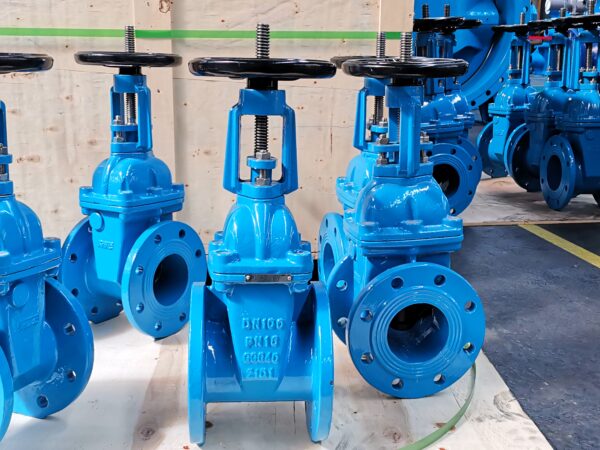A resilient seat gate valve differs from other types of gate valves primarily in the design of its seating mechanism and the materials used.
Here are some key differences:
Seating Mechanism: Resilient seat gate valves feature a resilient or rubber-like seat material that provides a tight seal against the gate (also known as the wedge) when the valve is closed. This resilient seat compensates for any minor misalignment or imperfections in the gate and ensures a reliable seal, even in low-pressure or non-ideal conditions.
Gate/Globe Design: Resilient seat gate valves typically have a wedge-shaped gate, similar to other gate valves. However, they may also have a slight taper or beveled edge on the gate to enhance the sealing ability between the gate and the resilient seat.
Seat Materials: Resilient seat gate valves use soft and flexible seat materials, such as rubber, elastomers, or synthetic compounds. These materials are chosen for their ability to create a tight seal, resist deformation, and provide resilience to pressure and temperature fluctuations.
Bi-Directional Sealing: Resilient seat gate valves are designed to provide bi-directional sealing. This means that they can effectively seal against fluid flow from both directions, providing reliable isolation and preventing backflow.
Low to Moderate Pressure Applications: Resilient seat gate valves are commonly used in low to moderate pressure applications, where a tight shut-off is required. They are suitable for applications such as water distribution, wastewater treatment, irrigation systems, and general industrial processes.
Limited Temperature Range: The temperature range of resilient seat gate valves is generally limited compared to some other gate valve types. The seat materials used in resilient seat gate valves may have temperature limitations and may not be suitable for high-temperature applications.
Reduced Metal-to-Metal Contact: Unlike metal-seated gate valves, resilient seat gate valves have minimal metal-to-metal contact between the gate and seat. This reduces the chance of corrosion or abrasion between the gate and seat, which can extend the valve’s service life.
It’s important to note that the specific design and features of resilient seat gate valves can vary among manufacturers. It’s recommended to consult the manufacturer’s documentation and guidelines for detailed information on the design and operation of a specific resilient seat gate valve model.
How does a resilient seat gate valve provide a tight seal and prevent leakage?
A resilient seat gate valve provides a tight seal and prevents leakage through its unique design and the properties of its seat material. Here’s how it achieves this:
Resilient Seat Material: Resilient seat gate valves use a seat material made of rubber, elastomers, or synthetic compounds. These materials possess inherent flexibility and resilience, allowing them to conform to the gate’s surface and create a tight seal when the valve is closed.
Compression and Deformation: When the gate valve is in the closed position, the gate is forced against the resilient seat. The resilient seat material compresses and deforms, conforming to the gate’s shape and filling any gaps or irregularities. This compression creates a reliable seal, preventing leakage across the seat area.
Self-Adjusting Sealing: The resilient seat material of a gate valve has the ability to self-adjust and compensate for minor misalignments or imperfections in the gate’s surface. Even if there are slight irregularities or wear on the gate, the resilient seat can adapt to provide a tight seal and prevent leakage.
Bi-Directional Sealing: Resilient seat gate valves are designed to provide bi-directional sealing, meaning they can effectively seal against fluid flow from both directions. reslient seat gate valve The resilient seat material ensures a tight seal in either direction, preventing backflow or leakage.
Elastic Memory: The seat material’s elastic memory allows it to return to its original shape and position when the valve is opened. This ensures that the resilient seat regains its sealing ability after each operation, maintaining a reliable seal over multiple cycles.
Pressure and Temperature Resistance: Resilient seat gate valves are designed to withstand the pressure and temperature conditions within their specified rating. The seat material is selected to withstand the operating pressures and temperatures without compromising its sealing capabilities or experiencing significant deformation.
It’s important to note that while resilient seat gate valves provide reliable sealing, they may not be suitable for applications with extremely high pressures, temperatures, or aggressive chemicals. The specific performance and limitations of a resilient seat gate valve may vary depending on the manufacturer and the seat material used. Consulting the manufacturer’s documentation or guidelines is recommended for detailed information on the sealing capabilities of a specific resilient seat gate valve model.
